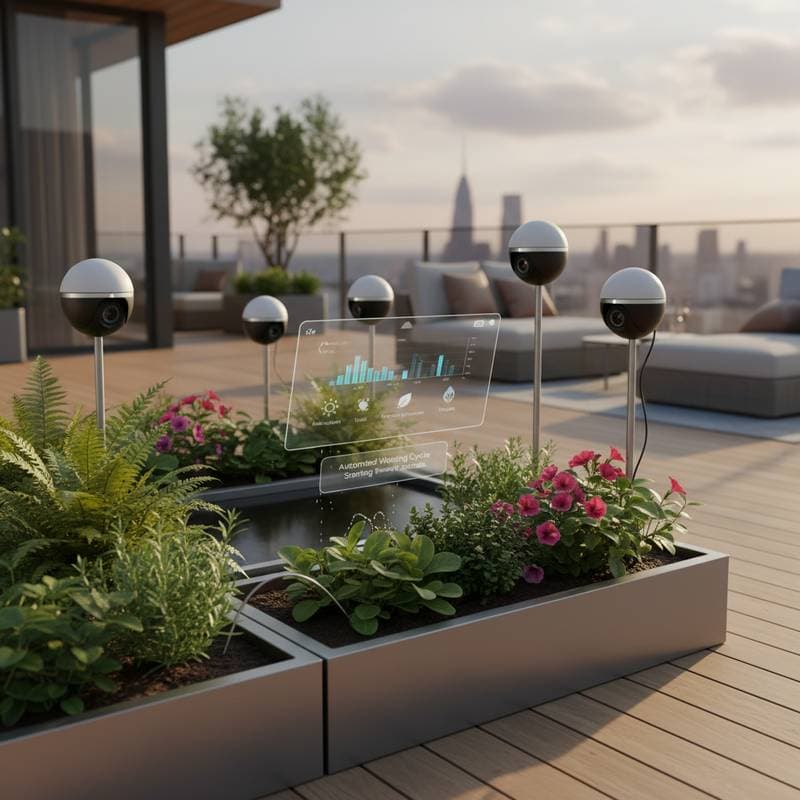Plants That Silence Deck Noise from Nosy Neighbors
City decks offer spaces for quiet coffee mornings or late evening conversations, yet sounds from traffic or nearby balconies often disrupt the calm. Plants provide an effective solution. A carefully selected wall of greenery absorbs and diffuses noise while providing shade, privacy, and aesthetic appeal.
The objective remains straightforward: employ living screens to soften sound, block sightlines, and establish a private retreat. Select robust plant varieties and position them strategically to achieve deck quietude without constructing physical walls.
Overview
Sound travels through air and reflects off hard surfaces such as concrete and wood. Leaves, soil, and stems disrupt this path by capturing and dispersing noise before it arrives at the ears. Dense plantings reduce sound levels by several decibels, sufficient to diminish voices and street noise to a background murmur.
Large yards prove unnecessary for this approach. Small decks accommodate tall planters or trellises supporting climbing vines. Layer plants of varying heights and textures to create an effective natural barrier.
Best Sound-Reducing Plants for Decks
1. Bamboo
Bamboo establishes one of the quickest living screens. Select clumping varieties like Fargesia to avoid the aggressive spread of running types. Mature stalks grow to 8 to 12 feet, forming a thick hedge that rustles gently in the wind. Plant in large containers with a minimum depth of 18 inches to manage root growth.
Why it works: Overlapping leaves and hollow stems fragment sound waves, while introducing subtle movement and shade.
2. Arborvitae
This evergreen shrub develops upright and dense growth. Position three or four in large planters to build a tall, year-round barrier. Opt for compact cultivars such as Emerald Green, which attain heights of about 10 feet.
Why it works: Tight foliage captures sound and seals gaps through which noise might otherwise penetrate.
3. Climbing Ivy or Honeysuckle
Vines flourish on trellises or wire grids. Once established, they form a thick mat of leaves that mutes both sound and views. English ivy offers a timeless appearance, whereas honeysuckle contributes fragrance.
Why it works: The extensive leaf surface absorbs sound, and flexible stems produce a dense living curtain.
4. Ornamental Grasses
Tall grasses like Miscanthus or Pampas grass sway and rustle, overlaying sharp sounds with a natural hush. Install them in rectangular trough planters positioned behind seating areas.
Why it works: Fine blades disperse high-frequency noise and respond to air currents, integrating unwanted sounds into a soft whisper.
5. Boxwood or Privet
Both species shape into tidy hedges suitable for containers. Maintain clean lines through trimming or permit looser growth for a relaxed aesthetic. Boxwood grows more slowly but shapes easily, while privet fills spaces more rapidly.
Why it works: Dense branching and small leaves capture mid-range noise, such as conversations or music.
Smart Plant Placement
- Position the tallest plants along the deck perimeter nearest the noise source.
- Layer heights by placing shorter shrubs or grasses in front of taller screens to seal sound gaps.
- Cluster three or more containers together, as groups block more sound than a single large pot.
- Incorporate trellises or lattices to support vines and enhance the barrier's strength.
- Maintain small air pockets of a few inches between containers to promote airflow and plant vitality.
Sound reduction strengthens as plants mature. Initiate with mid-sized specimens around 3 feet tall to observe improvements after one growing season.
Maintenance and Care
Sustain the health of the green wall to preserve its sound-blocking efficacy.
- Water consistently, as container plants on decks dry quickly. Continue until moisture appears at the drainage holes.
- Apply slow-release fertilizer once in spring. Excess feeding leads to fragile growth.
- Prune outer stems every few months to promote denser foliage.
- Inspect for pests like aphids and mites, which thin leaves and diminish coverage. Treat with mild soap solutions if necessary.
- Rotate containers a quarter turn monthly to ensure even sunlight exposure and balanced development.
Vibrant leaves absorb greater amounts of sound and appear fuller, rendering the screen both effective and visually appealing.
Troubleshooting Common Issues
Noise still penetrates. Address visible gaps with additional pots or hanging planters. Small openings permit sound to escape.
Plants appear sparse. Certain species require increased sunlight. Relocate planters to brighter locations or introduce reflective surfaces to amplify light.
Roots exceed container capacity. Repot into larger vessels every two years. Restricted roots hinder growth and compromise the barrier.
Wind causes damage. Secure tall planters with weights or brackets. Wind strain may snap stems and reduce coverage.
Allergy considerations. Select low-pollen options such as ferns or boxwood for those affected by seasonal allergies.
Budget and Time Considerations
Assemble a sound-reducing plant screen incrementally. For a modest deck, anticipate expenditures of:
- $150 to $300 for six to eight mid-sized container plants
- $100 for planters and trellises
- $25 for soil and fertilizer
Complete the setup over a weekend by arranging containers, adding soil, and planting selected species. Although growth requires time, quieter acoustics emerge within months as foliage expands.
Steps to Establish Your Deck Sanctuary
Begin by evaluating your deck's noise sources and available space. Choose plants suited to your climate and light conditions, then procure quality containers and soil. Install the arrangement with attention to layering and support structures. Monitor growth and adjust as needed to refine the barrier. Over time, this living installation transforms urban clamor into serene outdoor harmony.


